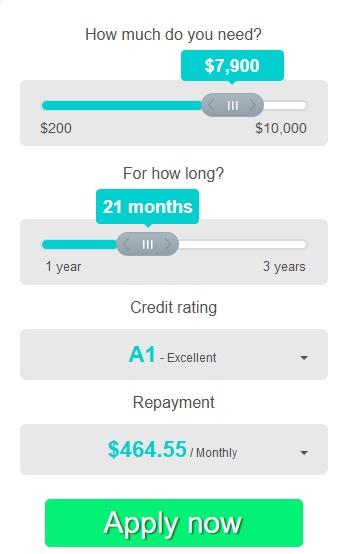I caught up with Clayton Howes, CEO of MoneyMe to explore in more detail the development of this Fintech which recently announced it had broken the $100m loan barrier (and has steamrolled past $125m since our conversation); all outside the traditional banking network.
Founded in 2013, with a pool of private investors, MoneyMe it is a great example of the innovation enabled by technology, building from the consumer in and leveraging the digital savvy behaviour of target consumers. It highlights why disruption is coming to the finance sector, and why we find the emergence of Fintech’s so significant.
The segment of the market in which they are operating is the $60 billion unsecured consumer finance sector, dominated by players like Latitude. GE Capital sold its local business to a consortium including Varde Partners, KKR and Deutsche Bank at an enterprise value of A$8.2bn, and renamed it Latitude in 2015.
But Clayton highlights the fact that MoneyMe has been set to differentiate, with the clear goal of making finance more easily accessible for young digitally aware millennium consumers. Take the example of a 26-year-old seeking to purchase a second hard car and needing $5,000 for 2 years. He would find the banks are not be interested, as the term and size is too low to be economically sustainable for them. He might put the loan on a credit card, but with a high interest rate, and the risk that credit on the card would be too tempting – many millennials are wary of credit cards. He might go to finance players offering loans at high rates and with limited flexibility.
So the MoneyMe offer is a fixed rate structured loan with standard and predictable repayments, most often paid by monthly direct debt. Through the online portal, borrowers can make changes to their repayment schedule, for example, delay payment one week and make two the next. Transparency is the watchword.
Behind the scenes, applications are screened and scored using a risk-based pricing model, including using the Equifax score, actuarial algorithms, behaviour patterns, and information from bank statements. The pricing of loans varies based on this extensive data rich analysis, but Clayton said that in many cases the charges will be lower than other providers, and easier to understand. And that’s the point; the core proposition is “What You See IS What You Get”. Some other finance providers add on various fees and charges, which makes it hard to see what the total costs of borrowing are.
The online “slider” form is intuitive and easy to use, and it recalculates the indicative APR each time. Those with adverse credit will pay more, as expected. Consumers can choose to make repayments weekly, fortnightly or monthly. The application process is also simple and swift.
 Interestingly the sweet spot for the business is a $5,000 over two years, but potential borrowers have the capacity to select a smaller loan for a shorted period, so touching on the SACC market, or a larger for longer loan of up to 3 years and $10,000. Should consumer want to borrow again subsequently, they have to apply again.
Interestingly the sweet spot for the business is a $5,000 over two years, but potential borrowers have the capacity to select a smaller loan for a shorted period, so touching on the SACC market, or a larger for longer loan of up to 3 years and $10,000. Should consumer want to borrow again subsequently, they have to apply again.
Default rates are contained, ranging between 2 and 4 per cent, which is significantly below the industry average. They have written more than 100,000 loans already, and growth is accelerating.
The company is also growing fast, with 42 employees, and big plans to expand into other financial products.
As we said recently, MoneyMe is a good example of the innovative new players pressing in on existing lenders with digitally sassy offerings to target market segments. We expect more disruption in the months ahead.
Our surveys underscore the strong demand for finance from niche segments, despite overall personal credit falling according to recent RBA data.

Hi Martin have you back calculated the interest rate? On the example shown in the article I’m at 24% which is substantially higher that a 18% credit card.